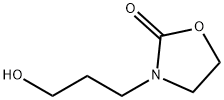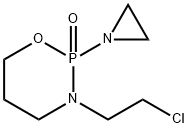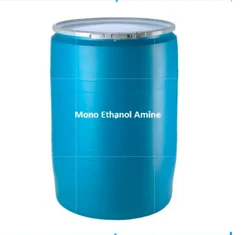Monoethanolamine
Synonym(s):Ethanolamine;MEA;Monoethanolamine;2-Aminoethanol;ETA
- CAS NO.:141-43-5
- Empirical Formula: C2H7NO
- Molecular Weight: 61.08
- MDL number: MFCD00008183
- EINECS: 205-483-3
- SAFETY DATA SHEET (SDS)
- Update Date: 2025-12-17 09:49:22

What is Monoethanolamine?
Description
Monoethanolamine is contained in many products, such as metalwork fluids. It is mainly an irritant. Traces may exist in other ethanolamine fluids.
Description
Ethanolamine, formally 2-aminoethanol, is a viscous, alkaline liquid with an unpleasant, ammonia-like odor. It is miscible in all proportions with water and several oxygenated organic solvents, including methanol, acetone, and glycerol. As the hazard information table shows, it is hazardous to humans and the environment.
In one of the earliest literature references to ethanolamine (1897), noted chemist Ludwig Knorr at the University of Jena (Germany) made the compound on a large scale by treating ethylene oxide with ammonia. The author cited work from as early as 1860 in which researchers made ethanolamine salts but could not isolate the free base. More recent ethanolamine research included synthesis from nitromethane and formaldehyde, but the prevailing manufacturing method still goes back to Knorr’s work.
Ethanolamine has several important industrial uses: as a “scrubber” to remove carbon dioxide, hydrogen sulfide, and other acidic pollutants from waste gas streams; as a starting material for manufacturing surfactants, chelating agents, and even pharmaceuticals; as an agent for softening leather; and as an additive for controlling pH in industrial water streams.
What’s new with ethanolamine? As with several recent Molecules of the Week, it has been discovered in outer space. Víctor M. Rivilla, Belén Tercero, Sergio Martín, and colleagues in Spain, Italy, Japan, Chile, and the United States identified ethanolamine in a molecular cloud in the interstellar medium, specifically in a complex in the Milky Way’s Galactic Center.
More than most molecules found in space, ethanolamine has particular relevance to possible origins of life on Earth. It is present in the water-soluble “heads” of phospholipids, which form all known cell membranes. And it could be a direct precursor of glycine, the simplest amino acid, which has been detected in the comet?67P/Churyumov–Gerasimenko.
Rivilla et al. conclude that their results “indicate that ethanolamine forms efficiently in space and, if delivered onto early Earth, could have contributed to the assembling and early evolution of primitive membranes.”
Chemical properties
Monoethanolamine is a clear, colorless or pale yellow-colored, moderately viscous liquid with a mild, ammoniacal odor. Ethanolamines can be detected by odor as low as 2-3 ppm.
Physical properties
Colorless, viscous, hygroscopic liquid with an unpleasant, mild, ammonia-like odor. Odor threshold concentration is 2.6 ppm (quoted, Amoore and Hautala, 1983). The lowest taste threshold concentration in potable water at 40 °C was 2.4 mg/L (Alexander et al., 1982).
The Uses of Monoethanolamine
Monoethanolamine is used as a dispersing agent for agricultural chemicals, in thesynthesis of surface-active agents, as a softening agent for hides, and in emulsifiers,polishes, and hair solutions.
The Uses of Monoethanolamine
Used as buffer; removal of carbon dioxide and hydrogen sulfide from gas mixtures.
The Uses of Monoethanolamine
As a chemical intermediate; corrosion inhibitor; in the production of cosmetics, detergents, paints, and polishes
What are the applications of Application
Ethanolamine is an aminoalcohol compound used as a surfactant
Definition
ChEBI: A member of the class of ethanolamines that is ethane with an amino substituent at C-1 and a hydroxy substituent at C-2, making it both a primary amine and a primary alcohol.
Production Methods
Monoethanolamine is prepared commercially by the ammonolysis of ethylene oxide. The reaction yields a mixture of monoethanolamine, diethanolamine, and triethanolamine, which is separated to obtain the pure products. Monoethanolamine is also produced from the reaction between nitromethane and formaldehyde.
Definition
ethanolamine: Any of three lowmeltinghygroscopic colourlesssolids. They are strong bases, smell ofammonia, and absorb water readilyto form viscous liquids. Monoethanolamine,HOCH2CH2NH2, is aprimary amine, m.p. 10.5°C; diethanolamine,(HOCH2CH2)2NH, is asecondary amine, m.p. 28°C; and triethanolamine,(HOCH2CH2)3N, is atertiary amine, m.p. 21°C. All aremade by heating ethylene oxide withconcentrated aqueous ammoniaunder pressure and separating theproducts by fractional distillation.With fatty acids they form neutralsoaps, used as emulsifying agentsand detergents, and in bactericidesand cosmetics.
General Description
A clear colorless liquid with an odor resembling that of ammonia. Flash point 185°F. May attack copper, brass, and rubber. Corrosive to tissue. Moderately toxic. Produces toxic oxides of nitrogen during combustion.
Air & Water Reactions
Water soluble with evolution of heat.
Reactivity Profile
Ethanolamine is a base. Reacts with organic acids (acetic acid, acrylic acid), inorganic acids (hydrochloric acid, hydrofluoric acid, nitric acid, sulfuric acid, chlorosulfonic acid), acetic anhydride, acrolein, acrylonitrile, cellulose, epichlorohydrin, mesityl oxide, beta-propiolactone, vinyl acetate. Emits toxic fumes of nitrogen oxides when heated to decomposition [Sax, 9th ed., 1996, p. 1498].
Health Hazard
Monoethanolamine causes severe irritationof the eyes and mild to moderate irritationof the skin. The pure liquid caused rednessand swelling when applied to rabbits’ skin.The acute oral toxicity of this compound waslow in animals. The toxic symptoms includedsomnolence, lethargy, muscle contraction,and respiratory distress. The oral LD50 valuesshowed a wide variation with species.
LD50 value, oral (rabbits): 1000 mg/kg
Monoethanolamine showed reproductive tox icity when administered at a dose of850 mg/kg/day, causing 16% mortality topregnant animals (Environmental HealthResearch and Testing 1987). This study alsoindicated that monoethanolamine reduced thenumber of viable litters but had no effect onlitter size, the birth weight, or percentage sur vival of the pups.
Fire Hazard
Special Hazards of Combustion Products: Irritating vapors generated when heated.
Flammability and Explosibility
Non flammable
Pharmaceutical Applications
Monoethanolamine is used primarily in pharmaceutical formulations
for buffering purposes and in the preparation of emulsions.
Other uses include as a solvent for fats and oils and as a stabilizing
agent in an injectable dextrose solution of phenytoin sodium.
Monoethanolamine is also used to produce a variety of salts with
therapeutic uses. For example, a salt of monoethanolamine with
vitamin C is used for intramuscular injection, while the salicylate
and undecenoate monoethanolamine salts are utilized respectively
in the treatment of rheumatism and as an antifungal agent.
However, the most common therapeutic use of monoethanolamine
is in the production of ethanolamine oleate injection, which is used
as a sclerosing agent.
Contact allergens
Monoethanolamine is contained in many products, such as metalworking fluids. It is mainly an irritant. Traces may exist in other ethanolamine fluids.
Safety Profile
Poison by intraperitoneal route. Moderately toxic by ingestion, skin contact, subcutaneous, intravenous, and intramuscular routes. A corrosive irritant to skin, eyes, and mucous membranes. Human mutation data reported. Flammable when exposed to heat or flame. A powerful base. Reacts violently with acetic acid, acetic anhydride, acrolein, acrylic acid, acrylonitrile, cellulose, chlorosulfonic acid, epichlorohydrin, HCl, HF, mesityl oxide, HNO3, oleum, H2SO4, p-propiolactone, vinyl acetate. To fight fire, use foam, alcohol foam, dry chemical. When heated to decomposition it emits toxic fumes of NOx. See also AMINES
Safety
Monoethanolamine is an irritant, caustic material, but when it is
used in neutralized parenteral and topical pharmaceutical formulations
it is not usually associated with adverse effects, although
hypersensitivity reactions have been reported. Monoethanolamine
salts are generally regarded as being less toxic than monoethanolamine.
LD50 (mouse, IP): 0.05 g/kg
LD50 (mouse, oral): 0.7 g/kg
LD50 (rabbit, skin): 1.0 g/kg
LD50 (rat, IM): 1.75 g/kg
LD50 (rat, IP): 0.07 g/kg
LD50 (rat, IV): 0.23 g/kg
LD50 (rat, oral): 1.72 g/kg
LD50 (rat, SC): 1.5 g/kg
Potential Exposure
Monoethanolamine is widely used in industry for scrubbing acid gases and in production of detergents and alkanolamide surfactants; to remove carbon dioxide and hydrogen from natural gas, to remove hydrogen sulfide and carbonyl sulfide; as an alkaline conditioning agent; as an intermediate for soaps, detergents, dyes, and textile agents. Diethanolamine is an absorbent for gases; a solubilizer for 2,4- dichlorophenoxyacetic acid (2,4-D); and a softener and emulsifier intermediate for detergents. It also finds use in the dye and textile industry. Triethanolamine is used as plasticizers, neutralizer for alkaline dispersions; lubricant additive; corrosion inhibitor; and in the manufacture of soaps, detergents, shampoos, shaving preparations; face and hand creams; cements, cutting oils, insecticides, surface active agents; waxes, polishes, and herbicides.
First aid
If this chemical gets into the eyes, remove anycontact lenses at once and irrigate immediately for at least30 min, occasionally lifting upper and lower lids. Seekmedical attention immediately. If this chemical contactsthe skin, remove contaminated clothing and wash immediately with soap and water. Seek medical attention immediately. If this chemical has been inhaled, remove fromexposure, begin rescue breathing (using universal precautions, including resuscitation mask) if breathing hasstopped and CPR if heart action has stopped. Transferpromptly to a medical facility. When this chemical hasbeen swallowed, get medical attention. If victim is conscious, administer water or milk. Do not induce vomiting.
Environmental Fate
Biological. Bridié et al. (1979) reported BOD and COD values of 0.93 and 1.28 g/g using
filtered effluent from a biological sanitary waste treatment plant. These values were determined
using a standard dilution method at 20 °C for a period of 5 d. Similarly, Heukelekian and Rand
(1955) reported a 5-d BOD value of 0.85 g/g which is 65.0% of the ThOD value of 1.31 g/g.
Chemical/Physical. Aqueous chlorination of ethanolamine at high pH produced Nchloroethanolamine,
which slowly degraded to unidentified products (Antelo et al., 1981).
At an influent concentration of 1,012 mg/L, treatment with GAC resulted in an effluent
concentration of 939 mg/L. The adsorbability of the carbon used was 15 mg/g carbon (Guisti et
al., 1974).
Metabolism
Animal
Monoethanolamine is a naturally occurring constituent in mammalian urine; the excretion rate is about 1.36 mg/kg/d for rats, 0.91 mg/kg/d for rabbits, and 0.454 mg/kg/d for cats (Luck and Wilcox 1953). It was suggested that deamination of Monoethanolamine occurs in vivo, since within 24 h after administration of [15N]-Monoethanolamine to rabbits, 40% of the [15N]-label was excreted as urea (Beard and Noe 1981). Sprinson and Weliky (1969) found that labeled Monoethanolamine was extensively converted to labeled acetate in rats.Eight h after intraperitoneal injection of 0.52μmoles of [14C]-Monoethanolamine in Wistar rats, 11.5% of the injected dose was recovered as 14C02 (Taylor and Richardson 1967). At that time, about 50% of the injected radioactivity was found in the liver, and significant amounts (>2% [14C]/g tissue) were detected in the spleen and brain. In the liver, greater than 90% of the radioactivity was found in the lipid fraction; in the kidney, spleen and brain, the per cent in the lipid fraction was about 60, 30, and 54%, respectively. It was suggested that the main metabolic pathway for Monoethanolamine in rats involves its incorporation into phospholipids, presumably via exchange with serine in phosphatidylserine, resulting in the formation of phosphatidylMonoethanolamine. The incorporation of [14C]-Monoethanolamine into Monoethanolamine phosphoglycerides in liver, heart and brain has been extensively studied and is thought to occur via the CDP-Monoethanolamine pathway or by a base exchange reaction (Ansell and Spanner 1967; Weinhold and Sanders 1971; Zelinski and Choy 1982).Fifty h after topical application of [14C]-Monoethanolamine to excised pig skin in vitro (4μg/cm2), greater than 60% of the applied dose was found associated with the skin (Klain et al 1985). Twenty-four h after dermal application of [14C]- Monoethanolamine to athymic nude mice (4μg to 1.45 cm2), 19% of the applied dose was recovered in expired C02; this value was similar to that obtained after ip injection of Monoethanolamine. Radioactivity from [14C]Monoethanolamine was widely distributed in the body, with the highest levels found in the liver (26%) and kidneys (2.2%). Radioactivity was observed in hepatic phospholipids as the Monoethanolamine, serine, and choline bases, and in proteins and amino acids isolated from liver and skin sections. Urinary excretion included radioactive Monoethanolamine, urea, glycine, serine, uric acid, and choline. Thus, Monoethanolamine penetrates mouse skin and may be oxidized to C02, incorporated into hepatic phospholipids, or metabolized to amino acids.Twenty-four h after administration of [14C]-Monoethanolamine to dogs, total radioactivity in the blood was 1.69% of the administered dse (Rhodes and Case 1977). Eleven % of the dose was excreted in the urine. The half-life of the persistent low level of radioactivity in the blood was 19 d.
Human
Monoethanolamine is a naturally occurring constituent in human urine, with a mean excretion rate in males of 0.162 mg/kg/d and in females of 0.491 mg/kg/d (Luck and Wilcox 1953). [14C]-Monoethanolamine was topically applied to human skin grafted onto athymic nude mice at a dose of 4μg to a 1.45 cm2 graft area (Klain et al 1985). The rate and amount of radioactivity expired as 14C02 was similar to that described above for mice. Thus, the penetration rates of Monoethanolamine in human skin grafts and mouse skin appear to be similar.
Storage
Monoethanolamine is very hygroscopic and is unstable when
exposed to light. Aqueous monoethanolamine solutions may be
sterilized by autoclaving.
When monoethanolamine is stored in large quantities, stainless
steel is preferable for long-term storage. Copper, copper alloys, zinc,
and galvanized iron are corroded by amines and should not be used
for construction of storage containers. Ethanolamines readily
absorb moisture and carbon dioxide from the air; they also react
with carbon dioxide. This can be prevented by sealing the
monoethanolamine under an inert gas. Smaller quantities of
monoethanolamine should be stored in an airtight container,
protected from light, in a cool, dry place.
Shipping
UN2491 Ethanol amine or Ethanolamine solutions, Hazard class: 8; Labels: 8-Corrosive material.
Incompatibilities
Monoethanolamine contains both a hydroxy group and a primary
amine group and will thus undergo reactions characteristic of both
alcohols and amines. Ethanolamines will react with acids to form
salts and esters. Discoloration and precipitation will take place in the presence of salts of heavy metals. Monoethanolamine reacts
with acids, acid anhydrides, acid chlorides, and esters to form amide
derivatives, and with propylene carbonate or other cyclic carbonates
to give the corresponding carbonates.
As a primary amine, monoethanolamine will react with
aldehydes and ketones to yield aldimines and ketimines. Additionally,
monoethanolamine will react with aluminum, copper, and
copper alloys to form complex salts. A violent reaction will occur
with acrolein, acrylonitrile, epichlorohydrin, propiolactone, and
vinyl acetate.
Waste Disposal
Controlled incineration; incinerator equipped with a scrubber or thermal unit to reduce nitrogen oxides emissions
Regulatory Status
Included in parenteral and nonparenteral medicines licensed in the UK and USA. Included in the Canadian List of Acceptable Nonmedicinal Ingredients.
Properties of Monoethanolamine
| Melting point: | 10-11 °C(lit.) |
| Boiling point: | 170 °C(lit.) |
| Density | 1.012 g/mL at 25 °C(lit.) |
| vapor density | 2.1 (vs air) |
| vapor pressure | 0.2 mm Hg ( 20 °C) |
| refractive index | n |
| Flash point: | 200 °F |
| storage temp. | Store at +15°C to +25°C. |
| solubility | Soluble in benzene, ether, carbon tetrachloride. |
| appearance | viscous colorless liquid |
| form | Liquid |
| pka | 9.5(at 25℃) |
| Specific Gravity | 1.012 |
| color | APHA: ≤15 |
| Relative polarity | 0.651 |
| PH | 12.1 (100g/l, H2O, 20℃) |
| Odor | ammoniacal odor |
| explosive limit | 3.4-27%(V) |
| Water Solubility | miscible |
| Sensitive | Air Sensitive & Hygroscopic |
| Merck | 14,3727 |
| BRN | 505944 |
| Henry's Law Constant | 1.61(x 10-10 atm?m3/mol) at 20 °C (Bone et al., 1983) |
| Exposure limits | TLV-TWA 3 ppm (~7.5 mg/m3) (ACGIH,
MSHA, and OSHA); TLV-STEL 6 ppm
(~15 mg/m3) (ACGIH); IDLH 1000 ppm
(NIOSH). |
| Dielectric constant | 31.940000000000001 |
| Stability: | Stable. Flammable; incompatible with strong oxidizing agents, strong acids. Hygroscopic. |
| CAS DataBase Reference | 141-43-5(CAS DataBase Reference) |
| NIST Chemistry Reference | Ethanolamine(141-43-5) |
| EPA Substance Registry System | Ethanolamine (141-43-5) |
Safety information for Monoethanolamine
| Signal word | Danger |
| Pictogram(s) |
 Corrosion Corrosives GHS05  Exclamation Mark Irritant GHS07 |
| GHS Hazard Statements |
H314:Skin corrosion/irritation H335:Specific target organ toxicity, single exposure;Respiratory tract irritation H412:Hazardous to the aquatic environment, long-term hazard |
| Precautionary Statement Codes |
P273:Avoid release to the environment. P280:Wear protective gloves/protective clothing/eye protection/face protection. P303+P361+P353:IF ON SKIN (or hair): Remove/Take off Immediately all contaminated clothing. Rinse SKIN with water/shower. |
Computed Descriptors for Monoethanolamine
| InChIKey | HZAXFHJVJLSVMW-UHFFFAOYSA-N |
Monoethanolamine manufacturer
JSK Chemicals
Agro Chem Corporation
Gomati Impex Private Limited
Oswal Chemicals
Swadesh Life Science
New Products
4,4-Difluoropiperidine hydrochloride tert-butyl 9-methoxy-3-azaspiro[5.5]undecane-3-carboxylate Indole Methyl Resin N-Isopropylurea N,N-Dicyclohexylcarbodiimide(DCC) MELDRUMS ACID 5-METHYLISOXAZOLE-4-CARBOXYLIC ACID Magnessium Bis glycinate Zinc ascorbate 1-bromo-2-butyne 2-acetamidophenol 9(10H)-anthracenone Erythrosin B, 4-Piperidinopiperidine 2-((4-morpholinophenylamino) (methylthio) methylene) malononitrile 2,4-dihydroxybenzaldehyde 3-(4-morpholinophenylamino)-5-amino-1H-pyrazole-4-carbonitrile Methyl 2-methylquinoline-6-carboxylate 2,6-dichloro-4-nitropyridine 4-Bromo-2-chlorobenzonitrile 2-(benzylamino)acetic acid hydrochloride 4-(tert-Butoxycarbonylamino)but- 2-ynoic acid 3,4-dihydro-2H-benzo[b][1,4]dioxepine 1-Phenyl-1-cycloprppanecarboxylicacidRelated products of tetrahydrofuran








You may like
-
 MONO ETHANOL AMINE 99%View Details
MONO ETHANOL AMINE 99%View Details -
 2-Aminoethanol 99%View Details
2-Aminoethanol 99%View Details -
 Ethanolamine CAS 141-43-5View Details
Ethanolamine CAS 141-43-5View Details
141-43-5 -
 Ethanolamine, For analysis ACS CAS 141-43-5View Details
Ethanolamine, For analysis ACS CAS 141-43-5View Details
141-43-5 -
 Ethanolamine, For analysis ACS CAS 141-43-5View Details
Ethanolamine, For analysis ACS CAS 141-43-5View Details
141-43-5 -
 Monoethanolamine CASView Details
Monoethanolamine CASView Details -
 Monoethanolamine CASView Details
Monoethanolamine CASView Details -
 Mono Ethanol Amine, Packaging Type: Drum, Packaging Size: Upto 200 kgView Details
Mono Ethanol Amine, Packaging Type: Drum, Packaging Size: Upto 200 kgView Details
141-43-5
